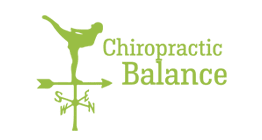
Most people are aware of what is deemed good or bad posture and whether they themselves are measuring up to the standard but did you know how linked your posture is to your overall health and function?
When we are in a stressed state we tend to adopt a posture with our shoulders rounded and head drooped forward. This is our brain preparing us for “fight or flight” – that is to either attack our stressor or run away from it. Combine this with the fact that most people spend many more hours sitting, driving or looking down at smart phones than our body was ever designed to and we are starting to have a very big problem.
More than just the less than pleasing aesthetics of bad posture, your energy levels, concentration and mood can also be adversely affected. If your shoulders close in as your head comes forward, your ability to breathe deeply and expand your chest to full capacity is decreased. Inefficient breathing not only minimises how much oxygen you can breathe in to use for all the vital processes within your body, but bad breathing techniques also cause imbalances in the spinal curves of your neck and upper back as well as the musculature that anchors in to your vertebrae and ribs.
It doesn’t stop there. As the head protrudes forward and the correct curve in then neck is lost, the body’s centre of gravity changes and the hips tilt forward to compensate and counterbalance. This impacts the curvature of the mid and lower spine, potentially causing problems in the lower back, the organs within that region and the function of the lower limbs. A research study entitled “The impact of Positive Sagittal Balance in Adult Spinal Deformity” (Spine Magazine, 30(18): 2024-2029, September 15, 2005) looked into this phenomena and stated that an individual’s measured health status decreased significantly with forward head posture (positive sagittal balance) and that this was proportional to the amount of forward head posture.
Roger Sperry (Ph.D. and Nobel Prize Winner 1981 for Physiology/Medicine) discovered that a large proportion of your brain’s activity is used to balance your body with gravity. If your structure is out of balance and there are mechanical distortions in the way you move this can change that brain activity and indirectly affect the parts of the brain that control your other important functions.
One of the first steps to avoiding and correcting postural deviations so that you can be the best version of you is education and awareness. Our chiropractic adjustments and the stretching and strengthening exercises that we recommend are designed to support you in your journey to improve your health and overall well-being.


